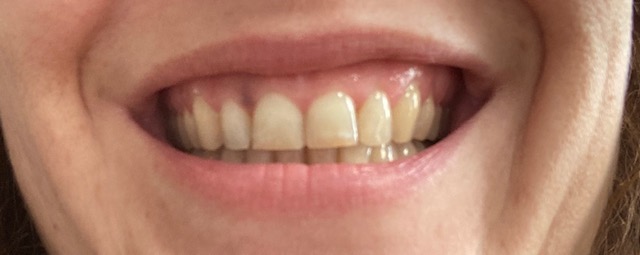Burn Scars Healing Guide
The journey to healing from burn scars can be long and challenging, but with the right approach, it’s possible to minimize their appearance and restore confidence. Burn scars can result from various types of burns, including first-degree, second-degree, and third-degree burns, each requiring unique care and treatment. Understanding the process of burn scar healing and the various treatment options available is crucial for managing and potentially reducing the visibility of these scars.
Understanding Burn Scars
Burn scars form as part of the body’s natural healing process after a burn injury. When the skin is damaged, the body repairs it by forming new tissue, which can lead to scarring. The severity and appearance of the scar depend on the depth and size of the burn. Second and third-degree burns are more likely to result in significant scarring due to the deeper damage to the skin layers.
Types of Burn Scars
There are several types of burn scars, including:
- Hypertrophic Scars: These are raised, red scars that can be itchy and sensitive. They are common after burns and can improve over time.
- Keloid Scars: Similar to hypertrophic scars but tend to be larger and can grow beyond the original burn area.
- Contracture Scars: These scars can tighten the surrounding skin, potentially limiting movement if they are near a joint.
- Atrophic Scars: These scars are depressed below the surrounding skin, often resulting from less severe burns.
Treatment and Care for Burn Scars
The treatment for burn scars depends on their type, size, and location, as well as the individual’s skin type and tone. Here are some common approaches:
1. Silicone Gel Sheets
These are applied directly to the scar to help flatten and soften it. Silicone gel sheets can be especially effective for new scars and are usually recommended for at least 12 hours a day for several months.
2. Pressure Garments
For larger scars, especially those from severe burns, pressure garments can be worn to apply consistent pressure, helping to flatten and reduce the scar’s visibility.
3. Laser Therapy
Laser treatments can help reduce the redness and thickness of scars. Different types of laser therapies target various aspects of the scar tissue, making it a versatile treatment option.
4. Surgical Revision
In some cases, surgical revision may be recommended for severe scars, especially those that impair movement or have a significant impact on appearance.
5. Creams and Ointments
There are various topical treatments, including creams, gels, and ointments, designed to promote healing, reduce inflammation, and minimize the appearance of scars.
Home Care and Prevention
While medical treatments are crucial, home care plays a significant role in the healing process of burn scars. Here are some key practices to incorporate:
- Keep the Scar Moisturized: Regularly apply a moisturizer or a topical treatment recommended by your healthcare provider to keep the scar hydrated and promote healing.
- Protect from the Sun: Sun exposure can cause scars to become darker and more pronounced. Use sunscreen with a high SPF when going outside, even on cloudy days.
- Massage: Gentle massage can help break up the collagen in the scar tissue, potentially making the scar less noticeable. However, it’s essential to consult with a healthcare provider before starting any massage therapy.
- Avoid Picking at Scabs: It’s crucial to let the scabs fall off naturally. Picking at them can lead to further scarring and potentially introduce infection.
Emotional Healing
The journey to healing from burn scars is not just physical but also emotional. Dealing with the aftermath of a burn injury can be challenging, and the appearance of scars can affect self-esteem and confidence. Seeking support from family, friends, or professional counselors can be incredibly beneficial. Support groups, either in-person or online, can also provide a sense of community and understanding among individuals experiencing similar challenges.
Future Trends in Burn Scar Healing
Research and technology are continually evolving, offering new and promising treatments for burn scars. Advances in stem cell therapy, nanotechnology, and bioengineering are areas of interest for their potential to improve wound healing and reduce scarring. These future trends hold hope for more effective treatments that can significantly minimize or even eliminate burn scars.
Conclusion
Healing from burn scars requires patience, persistence, and the right approach. While scars can be a permanent reminder of an injury, various treatments and home care practices can significantly improve their appearance and, in some cases, reduce their visibility. Embracing the journey towards healing, both physically and emotionally, and staying informed about the latest treatments and technologies can make a significant difference in managing burn scars and restoring confidence.
How long does it take for burn scars to heal?
+The time it takes for burn scars to heal can vary significantly depending on the severity of the burn, the effectiveness of the treatment, and individual healing processes. Some scars may take a year or more to fully mature and may continue to improve over time with proper care and treatment.
Can burn scars be completely removed?
+While burn scars can be significantly improved with treatment, completely removing them can be challenging. However, with advancements in medical technology and various treatment options, it’s possible to reduce their appearance to the point where they are barely noticeable. The success of scar removal depends on the type of scar, its location, and the individual’s healing capabilities.
What is the most effective treatment for burn scars?
+The most effective treatment for burn scars can vary depending on the type and severity of the scar. A combination of treatments such as silicone gel sheets, pressure garments, laser therapy, and surgical revision may be recommended. It’s crucial to consult with a healthcare provider or a dermatologist to determine the best course of treatment for your specific condition.


